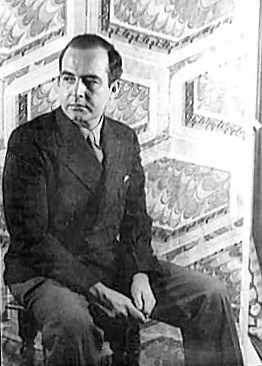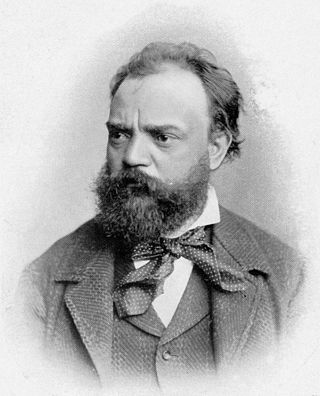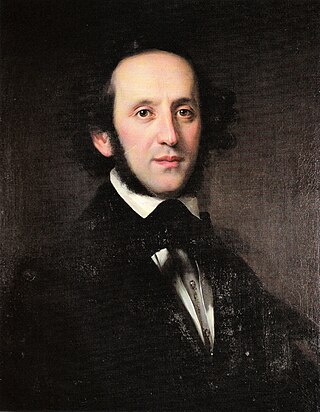Related Research Articles

Edvard Hagerup Grieg was a Norwegian composer and pianist. He is widely considered one of the leading Romantic era composers, and his music is part of the standard classical repertoire worldwide. His use of Norwegian folk music in his own compositions brought the music of Norway to fame, as well as helping to develop a national identity, much as Jean Sibelius did in Finland and Bedřich Smetana in Bohemia.

Sonata, in music, literally means a piece played as opposed to a cantata, a piece sung. The term evolved through the history of music, designating a variety of forms until the Classical era, when it took on increasing importance. Sonata is a vague term, with varying meanings depending on the context and time period. By the early 19th century, it came to represent a principle of composing large-scale works. It was applied to most instrumental genres and regarded—alongside the fugue—as one of two fundamental methods of organizing, interpreting and analyzing concert music. Though the musical style of sonatas has changed since the Classical era, most 20th- and 21st-century sonatas still maintain the same structure.

Samuel Osmond Barber II was an American composer, pianist, conductor, baritone, and music educator, and one of the most celebrated composers of the mid-20th century. Principally influenced by nine years' composition studies with Rosario Scalero at the Curtis Institute and more than 25 years' study with his uncle, the composer Sidney Homer, Barber's music usually eschewed the experimental trends of musical modernism in favor of traditional 19th-century harmonic language and formal structure embracing lyricism and emotional expression. However, he adopted elements of modernism after 1940 in some of his compositions, such as an increased use of dissonance and chromaticism in the Cello Concerto (1945) and Medea's Dance of Vengeance (1955); and the use of tonal ambiguity and a narrow use of serialism in his Piano Sonata (1949), Prayers of Kierkegaard (1954), and Nocturne (1959).
In music, perpetuum mobile, moto perpetuo (Italian), mouvement perpétuel (French), movimento perpétuo (Portuguese) movimiento perpetuo (Spanish), is a term used to describe a rapidly executed and persistently maintained figuration, usually of notes of equal length. Over time it has taken on two distinct applications: first, as describing entire musical compositions or passages within them that are characterised by a continuous stream of notes, usually but not always at a rapid tempo; and second, as describing entire compositions, or extended passages within them that are meant to be played in a repetitious fashion, often an indefinite number of times.

The Piano Quintet in E-flat major, Op. 44, by Robert Schumann was composed in 1842 and received its first public performance the following year. Noted for its "extroverted, exuberant" character, Schumann's piano quintet is considered one of his finest compositions and a major work of nineteenth-century chamber music. Composed for piano and string quartet, the work revolutionized the instrumentation and musical character of the piano quintet and established it as a quintessentially Romantic genre.
The Piano Quintet in F minor, Op. 34, by Johannes Brahms was completed during the summer of 1864 and published in 1865. It was dedicated to Her Royal Highness Princess Anna of Hesse. As with most piano quintets composed after Robert Schumann's Piano Quintet (1842), it is written for piano and string quartet.
Norwegian composer Edvard Grieg wrote three violin sonatas. They are all examples of his musical nationalism, since they all contain references or similarities to Norwegian folk song. Grieg wrote the sonatas between 1865 and 1887.
Samuel Barber's Concerto for Violoncello and Orchestra, Op. 22, completed on 27 November 1945, was the second of his three concertos. Barber was commissioned to write his cello concerto for Raya Garbousova, an expatriate Russian cellist, by Serge Koussevitzky on behalf of Garbusova and the Boston Symphony Orchestra. Funds for the commission were supplied, however, by John Nicholas Brown, an amateur cellist and a trustee of the Boston Symphony Orchestra. The score is dedicated to John and Anne Brown. Barber was still on active duty with the U. S. Army at the time he received the commission, and before beginning work asked Garbousova to play through her repertoire for him so that he could understand her particular performing style and the resources of the instrument. Garbousova premiered it with the Boston Symphony Orchestra in Symphony Hall, Boston, on 5 April 1946, followed by New York performances at the Brooklyn Academy of Music on 12 and 13 April. The concerto won Barber the New York Music Critics' Circle Award in 1947.
Cello Sonatas No. 1 and No. 2, Op. 5, are two sonatas for cello and piano written by Ludwig van Beethoven in 1796, while he was in Berlin. While there, Beethoven met the King of Prussia Friedrich Wilhelm II, an ardent music-lover and keen cellist. Although the sonatas are dedicated to Friedrich Wilhelm II, Ferdinand Ries tells us that Beethoven "played several times at the court, where he also played the two cello sonatas, opus 5, composed for Duport and himself". Although Jean-Pierre Duport was one of the King's teachers, it is now thought to have been his brother Jean-Louis Duport who had the honor of premiering these sonatas.

The Piano Trio No. 4 in E minor, Op. 90, B. 166, is a composition by Antonín Dvořák for piano, violin and cello. It is among the composer's best-known works.
Capricorn Concerto, Op. 21, is a composition for flute, oboe, trumpet, and strings by Samuel Barber, completed on September 8, 1944. A typical performance lasts approximately 14 minutes.
Samuel Barber's Symphony in One Movement (Op. 9) was completed 24 February 1936. It was premiered by Rome's Philharmonic Augusteo Orchestra under the baton of Bernardino Molinari on 13 December 1936. It lasts around 21 minutes. The title given in the printed score of the work is First Symphony (in One Movement), and the uniform title is Symphonies, no. 1, op. 9.

Felix Mendelssohn's Piano Trio No. 1 in D minor, Op. 49, was completed on 23 September 1839 and published the following year. The work is scored for a standard piano trio consisting of violin, cello and piano. It is one of Mendelssohn's most popular chamber works and is recognized as one of his greatest along with his Octet, Op. 20. During the initial composition of the work, Mendelssohn took the advice of fellow composer Ferdinand Hiller to revise the piano part. Hiller wrote, "with his usual conscientious earnestness when once he had made up his mind, he undertook the length and rewrite the whole pianoforte part."
Felix Mendelssohn's Sextet in D major, Op. 110, MWV Q 16, for piano, violin, two violas, cello, and double bass was composed in April–May 1824, when Mendelssohn was only 15, the same time he was working on a comic opera Die Hochzeit des Camacho. Its composition took place between the Viola Sonata and the Piano Quartet No. 3. It also preceded the famous Octet, Op. 20 by about a year. 1824 is also the probable year of the composition of the Clarinet Sonata. Like the latter, the Sextet was not published during the composer's lifetime. Its first edition was issued in 1868 as a part of a complete collection of Mendelssohn's works, hence the misleadingly high opus number.

Johannes Brahms composed his Piano Trio No. 2 in C Major, Op. 87, between 1880 and 1882. It is scored for piano, violin and cello. He wrote this piece at the age of 49.

The Piano Sonata in E-flat minor, Op. 26, by the American composer Samuel Barber, was commissioned for the twenty-fifth anniversary of the League of Composers by American songwriters Irving Berlin and Richard Rodgers. Composed from 1947 to 1949, the sonata is in four movements. It was first performed by Vladimir Horowitz in December 1949 in Havana, Cuba, followed by performances in Washington, D.C. and New York City in January 1950. The sonata is regarded as a cornerstone of American piano literature and one of Barber's most significant achievements. Critics hailed it as a defining moment in mid-20th-century music, with The New York Times describing it as the "first sonata truly to come of age by an American composer of this period."

The Piano Quartet in E♭ major, Op. 47, was composed by Robert Schumann in 1842 for piano, violin, viola and cello. Written during a productive period in which he produced several large-scale chamber music works, it has been described as the "creative double" of his Piano Quintet, finished weeks earlier. Though dedicated to the Russian cellist Mathieu Wielhorsky, it was written with Schumann's wife Clara in mind, who would be the pianist at the premiere on 8 December 1844 in Leipzig.

Music for a Scene from Shelley, Op. 7, is a tone poem composed by Samuel Barber in 1933.
The Sonata-Fantasia in E♭ major, Op. 44, by Henrique Oswald was composed in 1916. It is his second cello sonata. The approximate duration is 13–13½ minutes.
The Cello Sonata No. 1 in C minor, Op. 32, is a cello sonata composed by Camille Saint-Saëns in 1872. Dedicated to the French cellist Jules Lasserre, the sonata was premiered on 7 December 1872 at the Société nationale de musique in Paris, with Auguste Tolbecque on cello and the composer at the piano.
References
- ↑ "Barber: Cello Sonata Op. 6". sin80.com. Retrieved 2022-02-04.
- ↑ Heyman, Barbara B. (1992). Samuel Barber: The Composer and His Music. New York City and Oxford: Oxford University Press. pp. 110–1, 114. ISBN 9780195090581.
- ↑ Friedewald 1957, p. 166.
- ↑ Pleasants, Henry (May 25, 1935). "Samuel Barber Wins Two Musical Awards". Philadelphia Bulletin .
- ↑ Friedewald 1957, p. 172.
Sources
- Friedewald, Russell Edward (1957). A Formal and Stylistic Analysis of the Published Music of Samuel Barber (PhD diss). Ames, Iowa: Iowa State University.